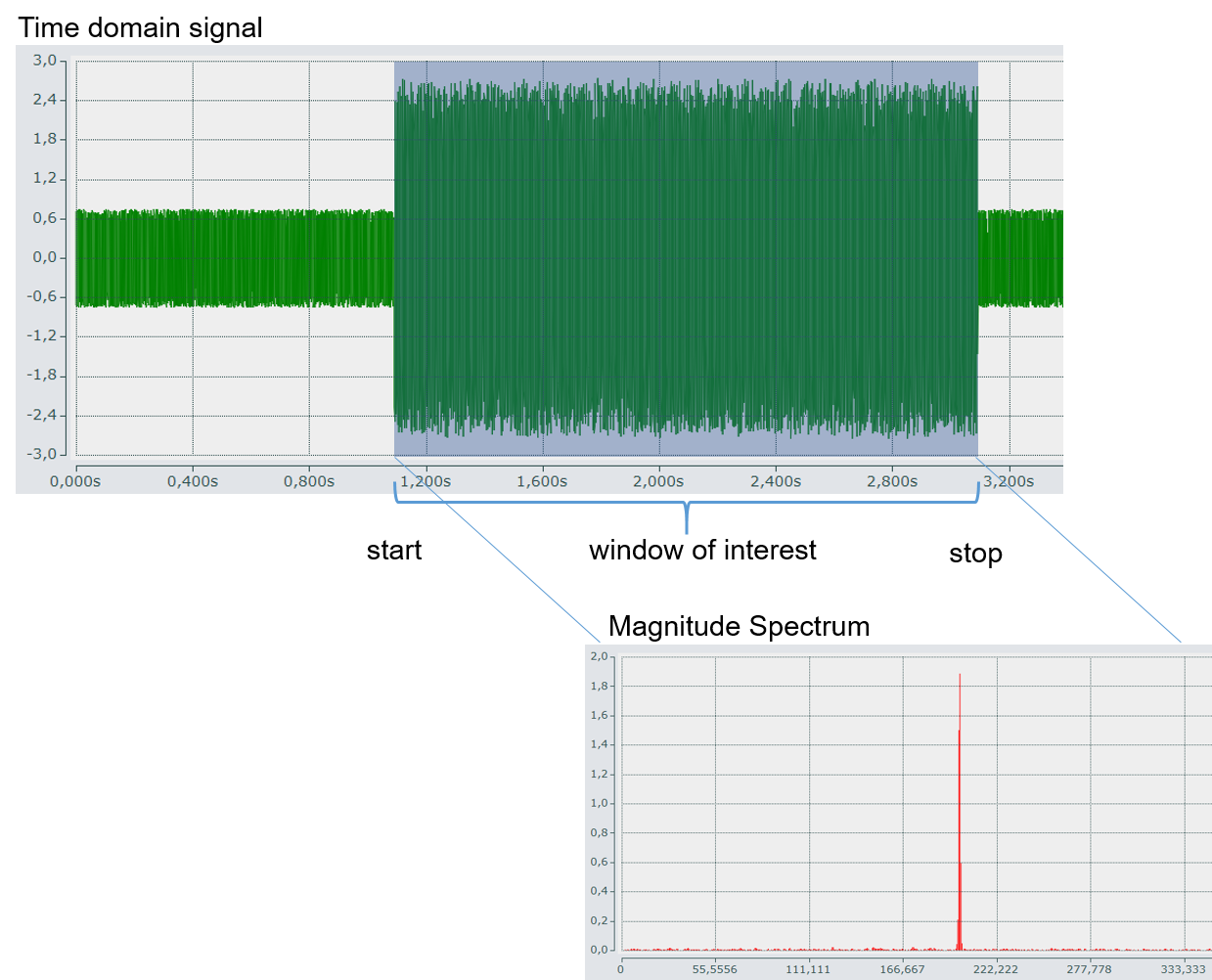Triggered analysis of a time period
Motivation
In addition to the continuous time analysis of a process, e.g. the vibration behavior of a continuously rotating shaft, another frequent application is the analysis of a defined timeframe. Application examples include analysis of vibration signals on a drill head, a milling unit or a shaft which only rotates during certain periods of time.
The advantage of an analysis integrated into the controller is particularly apparent in this case. The control usually initiates a certain process step, e.g. drilling. Accordingly, the sequential machine control can be used to trigger not only the process step but also the corresponding analysis step.
Implementation in the Condition Monitoring Library
With regard to the analysis functions, there is virtually no difference between the evaluation of a defined timeframe and the continuous analysis of a data stream. The only difference is that each triggered analysis is independent, i.e. not in a continuous context. Accordingly, all analysis function blocks of the TC3 Condition Monitoring Library can be used for continuous and triggered time window analyses. Only two points need to be observed when configuring the analysis chain:
- Sufficient data (a sufficiently large window of data) must be sent to the analysis chain via the FB_CMA_Source in order for a valid result to be calculated. For example, the window length of an FFT-based algorithm must be observed.
- In order to clearly separate the individual analyses from each other, it is only necessary to ensure that all analysis function blocks with memory properties (see the respective documentation for the individual algorithms; section Memory Properties) are reset once an analysis has been completed. The FB_CMA_Source offers the method
ResetAnalysisChain()for this. Alternatively, the methodResetData()can be used on every individual analysis function block; the method then works only on the individual analysis function block.
Sample implementation
A sample based on a synthetic signal is described below. The synthetic signal consists of a background noise and an additively superimposed sinusoidal signal with a frequency of 200 Hz and an amplitude of 2. The sinusoidal signal is always switched on and off for 2 seconds in alternation.
If continuous evaluation is selected for such a signal, it is not possible to determine in which time intervals the signal segments used for the evaluation lie. Accordingly, it is advisable to always start an evaluation window for a defined measuring time when the sinusoidal signal is switched on. The schematic diagram below shows the described synthetic signal and the amplitude spectrum based on the indicated evaluation window.

The source code and a more detailed description of the sample can be found here: Event-based frequency analysis.